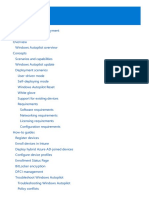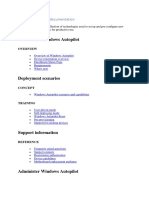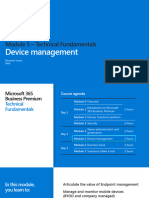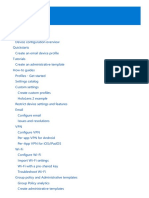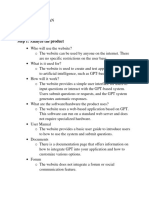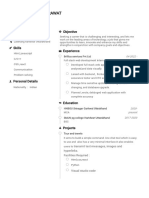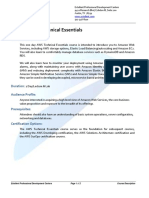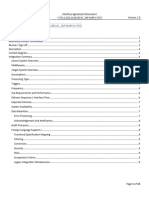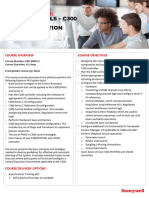0% found this document useful (0 votes)
116 views59 pagesModule 03 - MW11D Intune - Autopilot
Windows Autopilot is a modern deployment solution for Windows devices that simplifies the setup process by allowing devices to be configured with minimal user interaction. It eliminates the need for traditional image maintenance and enables IT to manage devices remotely, enhancing the user experience. Key features include device registration, profile assignment, and various deployment scenarios to suit different organizational needs.
Uploaded by
jaysla2009Copyright
© © All Rights Reserved
We take content rights seriously. If you suspect this is your content, claim it here.
Available Formats
Download as PPTX, PDF, TXT or read online on Scribd
0% found this document useful (0 votes)
116 views59 pagesModule 03 - MW11D Intune - Autopilot
Windows Autopilot is a modern deployment solution for Windows devices that simplifies the setup process by allowing devices to be configured with minimal user interaction. It eliminates the need for traditional image maintenance and enables IT to manage devices remotely, enhancing the user experience. Key features include device registration, profile assignment, and various deployment scenarios to suit different organizational needs.
Uploaded by
jaysla2009Copyright
© © All Rights Reserved
We take content rights seriously. If you suspect this is your content, claim it here.
Available Formats
Download as PPTX, PDF, TXT or read online on Scribd
/ 59








